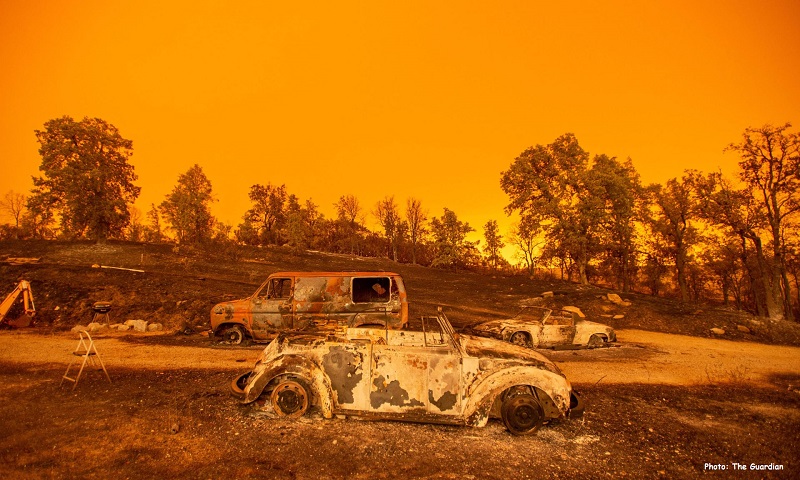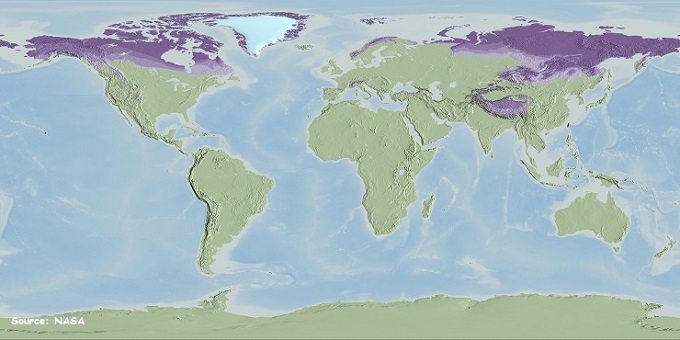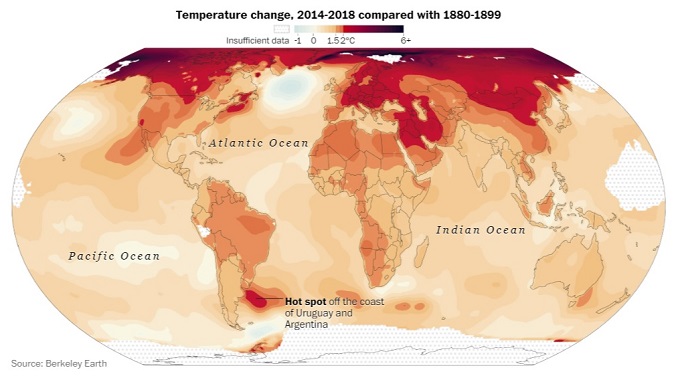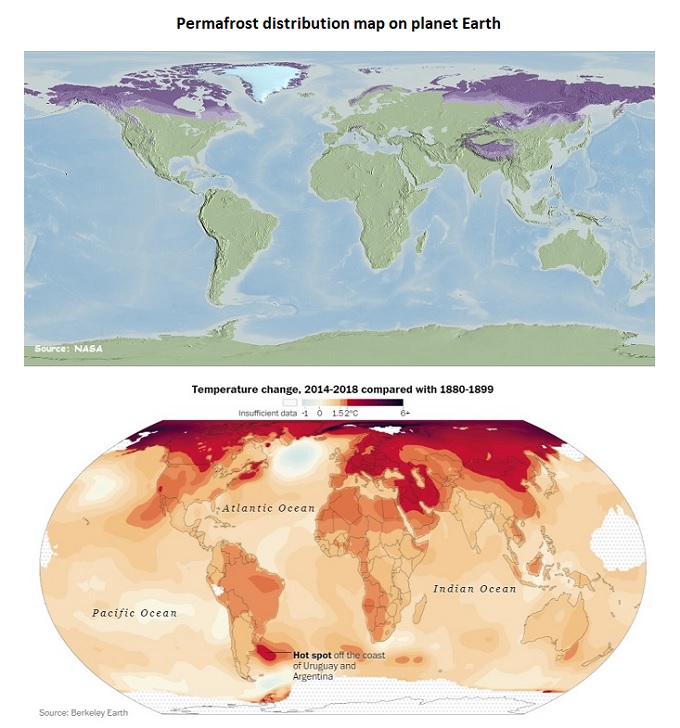
Pure global warming
About the causes of global warming without politics, without business and without marketing techniques
2019-10-19 11:23
Global warming, while remaining a purely scientific task, turned out to be a very tempting topic, not only for business, but also for politicians - large, medium, and even very small. On this topic, they not only make political PR, build business projects, develop marketing strategies, but also create large-scale social movements, which, in turn, give rise to new political leaders.
What makes the weather on earth
But let's try to drop politics, the struggle for energy markets, sharing bonuses according to different “protocols” and look at what is happening from the standpoint of ordinary physics and common sense.
Even if we consider the problem of climate change theoretically, the global warming that we observe on planet Earth can occur only in two cases:
-
If the average annual temperature of the Earth in the entire history of our planet has never reached the nominal values that it can provide the flow of energy from the Sun. That is, the Earth is in a state of warming up;
-
If the earth’s atmosphere has already reached its nominal temperature or simply higher than now, average annual temperatures, but then it has cooled under the influence of some factors, and now it is returning to its nominal values, gradually warming up under the influence of the same solar radiation.
But the first assumption can be completely scientifically refuted by the graph that you see below. It reflects reconstruction of changes in average annual temperatures on the planet over the past 500 million years.

This graph shows the changes in the average annual temperature on the planet in comparison with the average annual temperature of 1960-1990, which is taken as zero here. On the time axis, ancient periods are shown in millions of years. The last million years is broken into millennia.
As you can see, there have been periods on our planet when the average annual temperatures exceeded the current level not by 1-2 degrees, but by 10 degrees Celsius or more. And such “hot” periods in the Earth’s climate history lasted hundreds of millions of years.
In other words, the Earth most likely has already passed its temperature maximum.
Then the second assumption is correct: we live on a planet for which a different, warmer climate is defined by nature. Once this climate became colder - we will talk about possible reasons a little later, and now the average annual temperature of the Earth is returning to its natural norm, which the energy of the Sun provides for it.
In principle, the above is quite enough to understand that the average annual temperatures on our planet varied widely and without any human involvement. But for the sake of persuasiveness, let's try to find an explanation for the cooling that occurs on our planet from time to time.
To do this, I suggest looking at a map of the spread of permafrost on our planet.

This map was created on the basis of images taken from space, and is available on the website NASA Scientific Visualization Studio.
The first thing that catches your eye is that the so-called "permafrost" is widespread in the northern hemisphere and, which is very important to note, along the shores of the Arctic Ocean. Still very important is the fact that in eastern Siberia and Canada permafrost extends too far south. In those geographical latitudes, where, for example, in Europe, permafrost does not occur.
Moreover, the European coast of the Arctic Ocean, unlike all other parts of its shores, also does not have permafrost.
Personally, I have such a picture raises several questions at once:
-
Why is permafrost widespread in the northern hemisphere and almost never occurs in the southern?
-
Why is permafrost not covering the entire coast of the Arctic Ocean?
-
Why does permafrost in Siberia and Canada extend so far south - right up to the 50th latitude, and in other places, both the northern and southern hemispheres, in these latitudes of permafrost does not occur?
Let's remember these questions, and we ourselves will begin to study the next map.

On this map are marked with color those regions of the planet where it warms up the fastest. The more intense the color, the faster the average annual temperature in the region rises.
If the average annual temperature on the planet has increased by 1.1 degrees Celsius, then in the northern hemisphere this increase is already 2-6 degrees. Particularly rapidly rising temperatures in the regions of eastern Siberia, Canada and Alaska.
There are questions again:
-
Why are the main foci of warming concentrated in the northern hemisphere of the planet?
-
Why is the strongest warming of the atmosphere observed over the permafrost zone?
-
Why is air warmer over Europe slower than over the same latitudes in Siberia or Canada?
And now, let's put our cards nearby and try to find answers to our questions.

Both cards were taken by us from quite authoritative sources. The bottom map is published on the site The Washington Post, top map - on site NASA Scientific Visualization Studio.
So what we see:
-
The climate on Earth was once warmer, but then it got colder and now we are seeing a return to a warmer and more natural climate for our planet.
-
The main drivers of global warming are concentrated in the northern hemisphere of the planet.
-
Here - in the northern hemisphere - the main permafrost deposits are located.
-
Places where the largest increase in average annual temperatures is observed strangely coincide with the permafrost zone.
-
In the European part of the northern hemisphere, where there is no permafrost, average annual temperatures increase more slowly than in Siberia, Canada, and Alaska, where permafrost dominates.
-
In the southern hemisphere of our planet, where permafrost practically does not occur outside Antarctica, there are no foci of rapid warming.
As you can see, the main foci of the so-called "global" warming are actually concentrated only in the northern hemisphere of the Earth, and the southern hemisphere is heated within the average annual temperatures throughout the planet.
Mystery of the northern hemisphere
So how is the northern hemisphere of our planet so fundamentally different from the southern one that it is it that is the engine of warming throughout the globe?
In fact, there are many differences, but in relation to global warming we will be interested in only one of them: the glaciers of the south pole lie on the surface of the mainland - Antarctica, and the ice fields of the North pole drift freely in the Arctic Ocean. This is very important and this is the key to the solution.
Ice that floats freely on the surface of the water, unlike ice lying on the mainland, can be thrown onto the shores of the Arctic Ocean. Which, in all likelihood, has happened repeatedly in the history of the Earth.
Ice could be thrown to land by gigantic tsunamis caused by earthquakes, continental shifts or the fall of cosmic bodies to Earth.
Depending on the size of the tsunami, ice could be thrown very far, and judging by the spread of permafrost, such cataclysms sometimes happened.
There could be some other reasons for the powerful ice movements, but now the result is important to us. And it is not difficult to imagine the result, but we will return to this later.
The reasons that are hidden in the ice
So, it became clear to us why the main events leading to climate change occur in the northern hemisphere.
Here, as a result of natural disasters, at times floating ice from the Arctic Ocean moved to the continents. As a result, a significant part of the land for millennia was covered with a thick layer of ice.
This led to a sharp and long-term cooling on the whole planet. Many life forms died out. Part of the rivers froze, and meltwater streams pierced new channels. The levels of the seas and oceans changed, generating powerful ocean currents.
But as the ice melted, the air in the northern hemisphere gradually became warmer. This warming by atmospheric currents and water currents spreads to the whole planet, leading to an increase in average annual temperatures throughout the globe.
Thus, what is commonly called “global warming” is not really what it is. Annual average temperatures, of course, change towards warmer ones, but this phenomenon will correctly be called a return of climate to its natural norm.
But what point the climate is returning to and how soon this process will end - these are the most interesting questions.
It is safe to say that warming can reach +14 degrees Celsius, as it was several hundred million years ago. And the timing of this warming has nothing to do with either geological or cosmic scales.
How soon the planet’s climate returns to its natural norm depends only on the rate of melting of Arctic glaciers on the shores of the Arctic Ocean and in the depths of the continents. This process has a completely terrestrial nature and is already proceeding very quickly, thanks to the widespread thermokarst formations in the thickness of continental glaciers.
When the glaciers of Siberia, Canada and Alaska melt, humanity will face global climate change in all its glory. And, please note that global warming depends on human activities to a negligible extent. That is why we cannot stop the return of the Earth’s climate to its normal state.
So without expensive research, political debates and “decisions at the highest level”, we have revealed all the secrets of global warming.
Author: Sergii Prosvietov.
Каждый ваш вклад имеет большое значение. Поддержите независимые научные исследования автора и помогите более глубоко изучать важные темы сегодняшнего дня
Пополнить банку на независимые научные исследования
Author: Sergii Prosvietov
Просмотров всего: 22298 Просмотров сегодня: 76

Law of Ukraine "On Protection of Personal Data" of 01.06.2010 № 2297-VI

Mysterious albedo